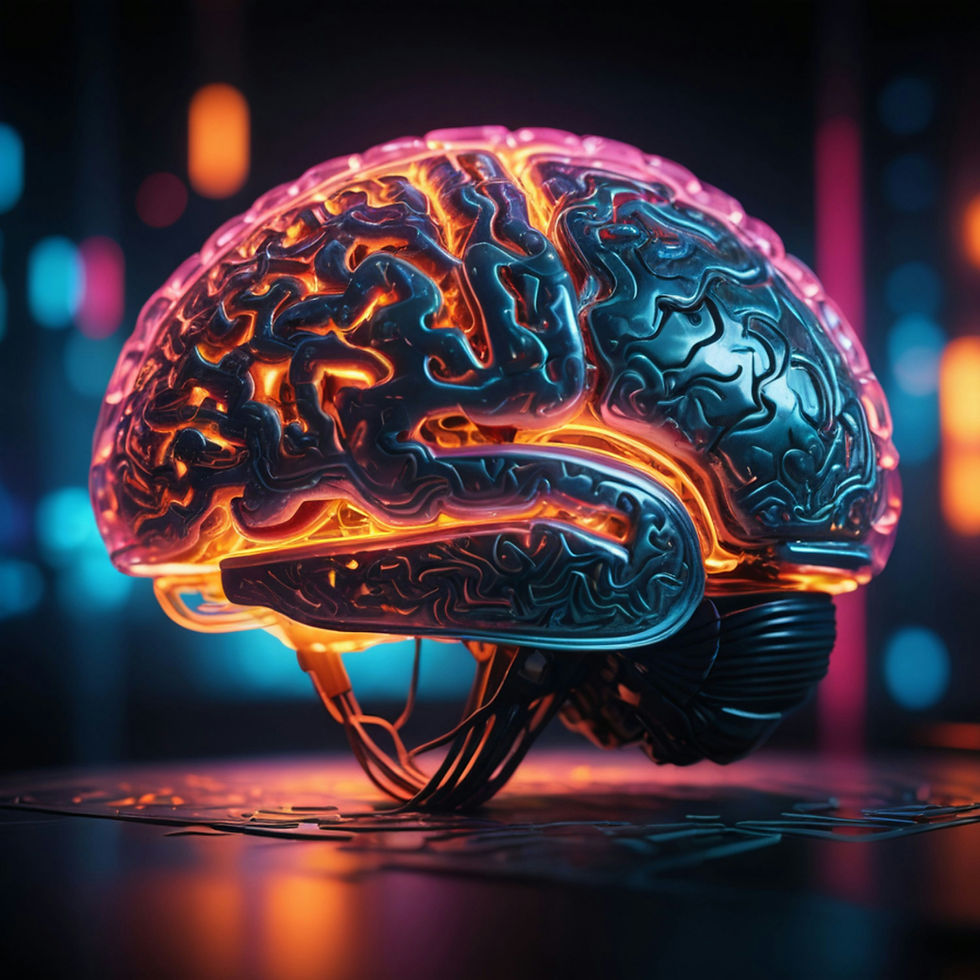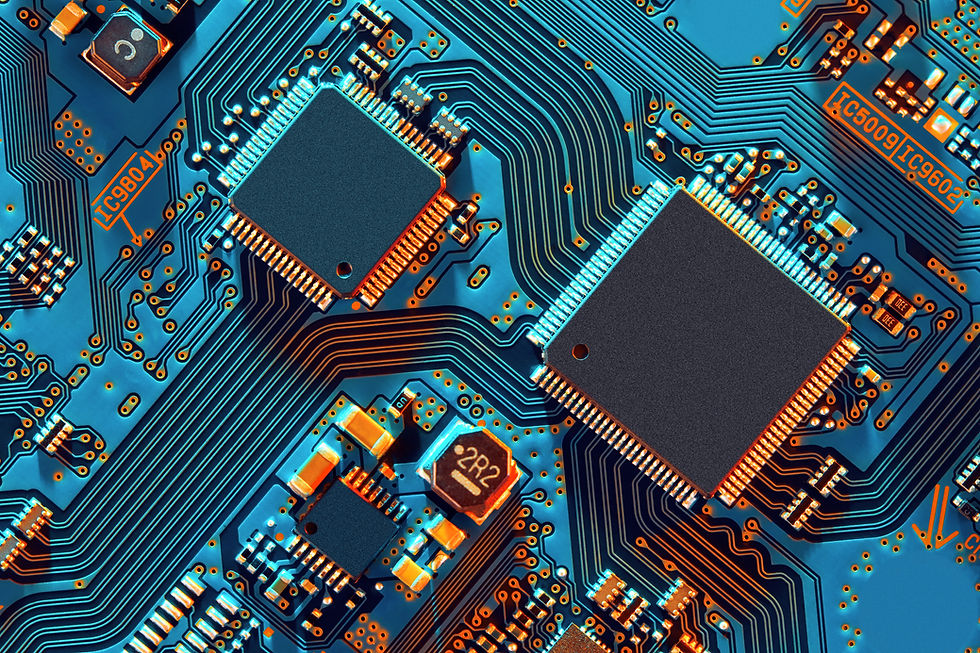Quantum Computing Revolution: The Future Technology That Will Disrupt Traditional Computers
- Amiee

- Mar 9
- 6 min read
As technology advances, the demand for computing power continues to rise. However, traditional classical computers are gradually approaching their physical limits. As a result, scientists have begun exploring more groundbreaking computational methods—**Quantum Computing**. This revolutionary technology leverages the fundamental principles of quantum mechanics to tackle complex problems that even today’s supercomputers struggle to solve. In the future, quantum computing could reshape fields such as scientific research, finance, and manufacturing, unlocking new possibilities beyond conventional computing capabilities.
The Fundamentals of Quantum Computing
What is Quantum Computing?
Quantum computing is an advanced computational technology that leverages quantum mechanical phenomena such as superposition, entanglement, and interference to perform calculations. Unlike traditional computers, which process information using binary bits (0s and 1s), quantum computers utilize quantum bits (qubits) that can exist in a superposition of both 0 and 1 states simultaneously. This unique property enables quantum computers to perform multiple calculations at once, drastically increasing their computational power.
The Four Key Principles of Quantum Computing
Superposition
Superposition is one of the fundamental principles of quantum computing. In classical computing, a bit can only exist in one of two states: 0 or 1. However, a qubit can exist in both states at the same time due to superposition. This allows quantum computers to process a vast number of possibilities simultaneously, significantly boosting computing efficiency.
To better understand superposition, imagine flipping a coin. When it lands, it is either heads or tails, much like a traditional bit being either 0 or 1. However, while the coin is in the air, it exists in a state where it is potentially both heads and tails at the same time—this is similar to how qubits function. Because of this property, quantum computers can analyze multiple possibilities simultaneously instead of sequentially testing each scenario.
For example, in stock market analysis, traditional computers must evaluate various economic factors and simulate potential market changes one at a time. A quantum computer, on the other hand, can simultaneously process multiple market scenarios, significantly improving forecasting accuracy and helping investors make more informed decisions.
Entanglement
Quantum entanglement describes a mysterious connection between two qubits. When two qubits become entangled, changing the state of one qubit will instantly affect the other, no matter how far apart they are. This phenomenon defies classical physics and enables quantum computing to facilitate ultra-fast, non-local data transmission.
A good analogy for entanglement is identical twins. Even if they are on opposite sides of the world, when one twin experiences a change in emotion, the other might intuitively feel the same way. Similarly, in an entangled quantum system, if one qubit is altered, the other responds instantaneously, making quantum computing a powerful tool for secure communication.
This principle is particularly useful in quantum cryptography, where entangled qubits can be used to establish ultra-secure communication networks. The Quantum Key Distribution (QKD) protocol, for example, ensures that any attempt to intercept the information will be immediately detected, making it invaluable for fields such as national security, banking, and confidential communications.
Interference
Interference is a critical principle that enhances the accuracy of quantum computing. Quantum states, much like waves, can interfere with each other, reinforcing correct answers while canceling out incorrect ones. This helps quantum computers increase the probability of finding the right solution efficiently.
To illustrate, imagine ripples in a pond. When two sets of waves meet, they can either amplify or cancel each other out. Quantum computers use this concept to optimize their computations. Constructive interference strengthens the correct solutions, while destructive interference minimizes errors.
One real-world application of interference is in drug discovery. Quantum computers can simulate complex molecular interactions at a speed far beyond traditional computers. By applying interference, researchers can eliminate incorrect chemical combinations faster and identify promising drug candidates more efficiently, leading to groundbreaking medical advancements.
Decoherence
Decoherence is one of the biggest challenges in quantum computing. Quantum states are extremely fragile and easily disrupted by their environment, causing the system to lose its quantum properties. This can result in computational errors and instability.
A simple analogy for decoherence is a hot cup of coffee. If left on the table, it will gradually cool down due to external influences like room temperature. Similarly, quantum computers must operate in highly controlled environments—often near absolute zero (-273.15°C)—to minimize interference. Even slight temperature fluctuations or electromagnetic disturbances can cause decoherence, leading to a loss of information.
To combat decoherence, scientists are developing quantum error correction techniques to preserve quantum information and enhance the stability of quantum computations. These advancements are crucial for making quantum computing more practical and reliable.
How Quantum Computers Work?
Quantum Bits (Qubits)
Quantum computers rely on qubits, which can be implemented using various technologies, each with its advantages and challenges:
Superconducting Qubits: These are built using superconducting materials that exhibit zero electrical resistance at extremely low temperatures. Companies like Google, IBM, and Amazon are leading research in this area due to its high-speed operation. However, maintaining such systems at near-absolute-zero temperatures presents a major challenge.
Trapped Ions: This method captures charged atomic ions using electromagnetic fields and manipulates their quantum states with lasers. Trapped-ion qubits have long coherence times, making them highly reliable for precision calculations. However, their processing speed is slower than other technologies.
Photonic Qubits: Photons (particles of light) are used to transmit quantum information. Since photons are highly stable and resistant to environmental noise, they are ideal for long-distance quantum communication and encryption. However, building large-scale photonic quantum computers remains a challenge.
Quantum Dots: These are semiconductor nanostructures that trap single electrons to encode quantum information. They are compatible with existing semiconductor technology, making them promising for scalable quantum computing. However, short coherence times pose a significant challenge.
Quantum Algorithms
Quantum computing operates differently from classical computing, enabling the development of powerful quantum algorithms:
Shor’s Algorithm: Capable of factoring large numbers exponentially faster than classical computers, posing a threat to current RSA encryption systems.
Grover’s Algorithm: Used for searching unsorted databases, reducing search times from O(n) to O(√n), making it extremely valuable for data retrieval and AI applications.
Quantum Simulation: Helps scientists model molecular and material behaviors, accelerating research in pharmaceuticals, chemistry, and nanotechnology.
Applications of Quantum Computing
Despite still being in its early stages, quantum computing is expected to revolutionize various industries:
Pharmaceuticals & Chemistry: Quantum computers can simulate molecular structures to develop new drugs faster and more accurately.
Finance & Risk Analysis: Quantum algorithms can analyze market risks and optimize investment strategies in real-time.
Artificial Intelligence & Machine Learning: Quantum computing can accelerate training and optimization of AI models, leading to more efficient and powerful AI systems.
Logistics & Supply Chain Optimization: Quantum computing can identify the most efficient routes for transportation and supply chains, reducing costs and delivery times.
Cybersecurity & Encryption: While quantum computers can break traditional encryption, they can also develop unbreakable quantum encryption methods, such as Quantum Key Distribution (QKD).
Challenges and Future of Quantum Computing
Despite its promise, quantum computing faces several key challenges:
Quantum Error Correction: Quantum states are highly fragile, requiring sophisticated error correction techniques.
Scalability: Building large-scale, fault-tolerant quantum computers remains a major hurdle.
Extreme Cooling Requirements: Superconducting qubits require near-absolute-zero temperatures, increasing maintenance costs.
Nevertheless, major tech companies, including IBM, Google, and Amazon, are investing heavily in quantum research. Within the next decade, we may see hybrid quantum-classical computing models, where quantum processors complement traditional computing systems.
Conclusion
Quantum computing represents a paradigm shift in computational technology, unlocking possibilities far beyond the capabilities of classical computers. Imagine today’s supercomputers as librarians who search for books one by one, whereas a quantum computer would instantly scan an entire library and retrieve the book you need in seconds.
Although quantum computing is still in its infancy, its potential impact is comparable to the steam engine revolutionizing industry, electricity transforming technology, and the internet reshaping global communication. As scientists and engineers continue to tackle technical hurdles, we are gradually moving closer to a quantum-powered future that promises breakthroughs in medicine, finance, AI, and cybersecurity.
Quantum computing is not just a theoretical concept—it is a technological revolution in the making. In the near future, we may witness the dawn of a smarter, more efficient world powered by quantum technology.




